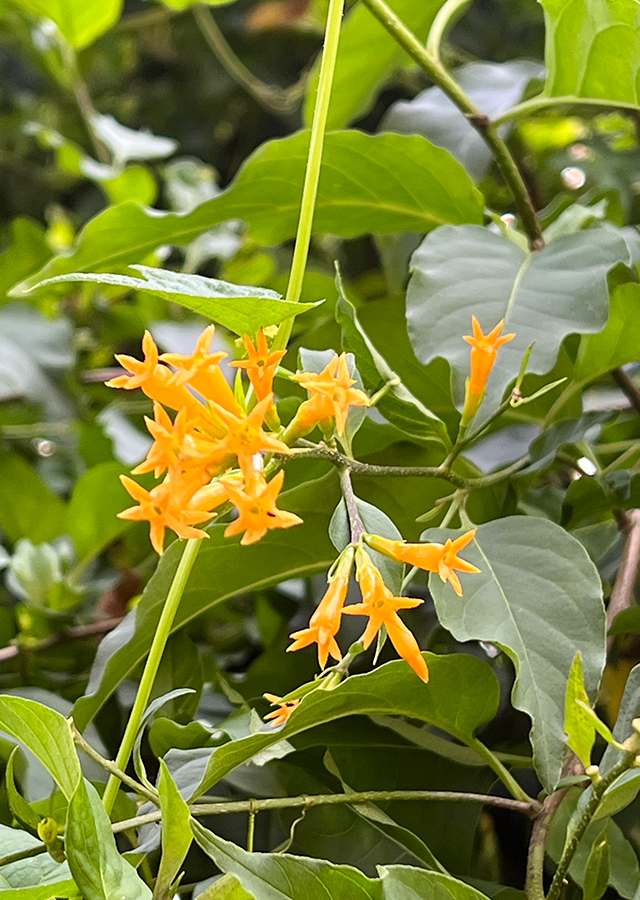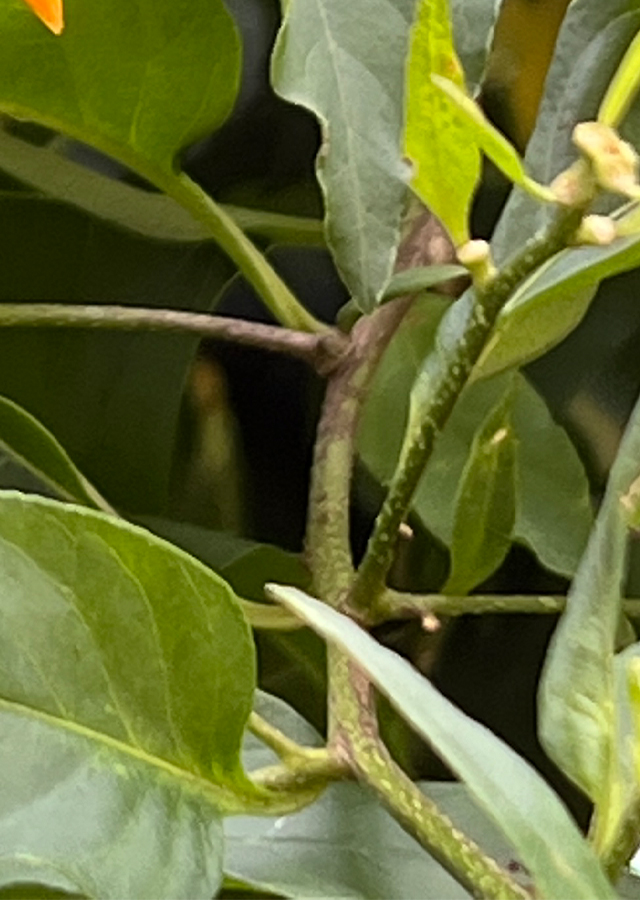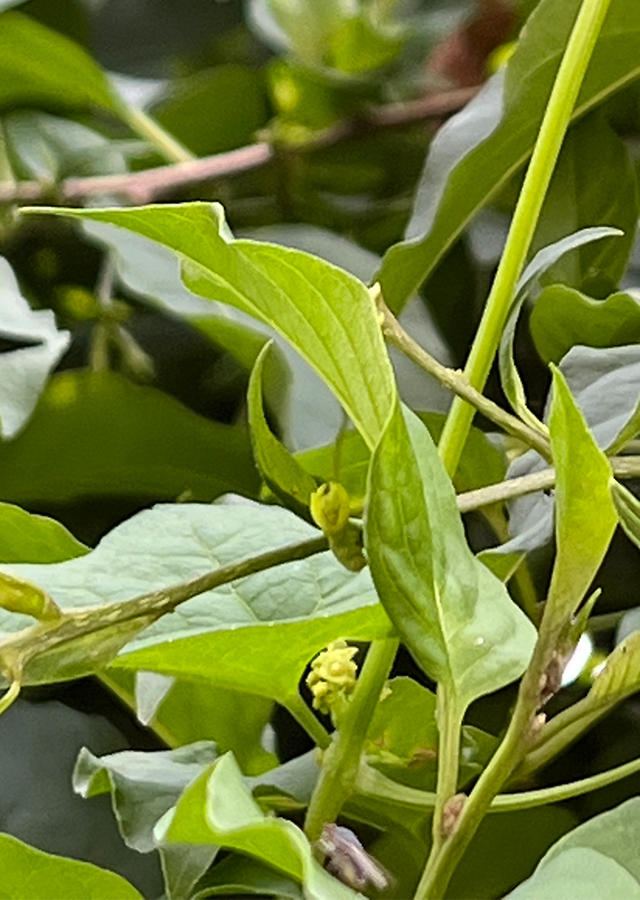Traditional Herbs from Cestrum aurantiacum
medicine_itch
- Prepare enough fresh ki jogo leaves, wash them thoroughly.
- Rub the leaves on itchy skin.
What is Cestrum aurantiacum Looks like??



Parts of Cestrum aurantiacum that could be used
- Leaf
Cestrum aurantiacum Distribution
Cestrum aurantiacum or Ki jogo is an exotic species that originates from Tropical America from Mexico, Guatamala, Nicaragua, Costa Rica to Venezuela, but is now widely cultivated throughout Africa, as well as in India, Europe and Australia. This species is widely planted by people as an ornamental plant because of the striking color of its flowers. Apart from being an ornamental plant, Ki jogo is also believed to have good health benefits and is used traditionally as medicine. However, this species is notoriously toxic to animals (especially livestock), and may have the same effect on humans, if ingested.Agroecology of Cestrum aurantiacum
Ki jogo can generally be found in abandoned gardens, roadsides, forests, mountains and disturbed areas near cities, growing at an altitude of between 850-2,600 m above sea level. Prefers fertile, well-drained soil enriched with compost. Prefers areas in full sun or light shade, as shady conditions inhibit flowering and produce leggy plants.
Morphology of Cestrum aurantiacum
- Stems woody, heavily branched, branches often lenticel-shaped, sparsely hairy to glabrous.
- Leaves alternate (alternate), pale green to dark green with yellowish venation, ovate to lanceolate, base pointed, edge the leaves are flat, the tip of the leaf is sharp (acute) to tapered (acuminate), both surfaces are usually glabrous, sometimes coriaceous (like skin/bone).
- Flowers have a citrus-like aroma. pungent, especially at night. Petals narrow tubular, glabrous to sparsely pilose on the outside, lobes narrowly triangular to subulate (ligulate) above, margins tightly rolled with lobes extending downward as five dark veins throughout the calyx, pointed. Corolla usually orange to bright yellow sometimes yellowish red, tubular with 5 - 6 small round lobes, lobes widened to narrow triangular, often apiculate, glabrous externally, pilose internally Colored anthers yellow to orange. The ovaries (ovaries) are brownish, egg-shaped. The inflorescences are arranged in groups at the ends of the branches (terminal groups) and in the axils of the leaves (axillary groups) in the form of racemes or panicles.
- The berries are subsessile, white, cream or yellow, ovoid, small.
- Seeds number 1-5(\u20138) per berry, dark brown or blackish, ellipsoidal, prismatic, usually curved.
Cultivation of Cestrum aurantiacum
Propagation is done vegetatively (stem cuttings).
Cestrum aurantiacum, more details :
Chemical Content of Cestrum aurantiacumSteroid saponins, sterols, catechol tannins, flavonoids, fatty acids (myristic, palmitic stearic, oleic, linoleic), β-amyrin, β-sitosterol
Benefits of Cestrum aurantiacum
Treats itchy skin and has antimicrobial activity.
Simplisia of Cestrum aurantiacum
Another Facts for Cestrum aurantiacum :
Synonym of Cestrum aurantiacumCestrum auriculatum Ruiz & Pav., Cestrum paucinervium Francey, Habrothamnus aurantiacus (Lindl.) Regel
Habitus of Cestrum aurantiacum
Bush. Annual shrub, sometimes climbing or creeping, about 1-6.5 m high
Habitat of Cestrum aurantiacum
- Forest", "Mountains", "Roadside", "Land
No comments:
Post a Comment